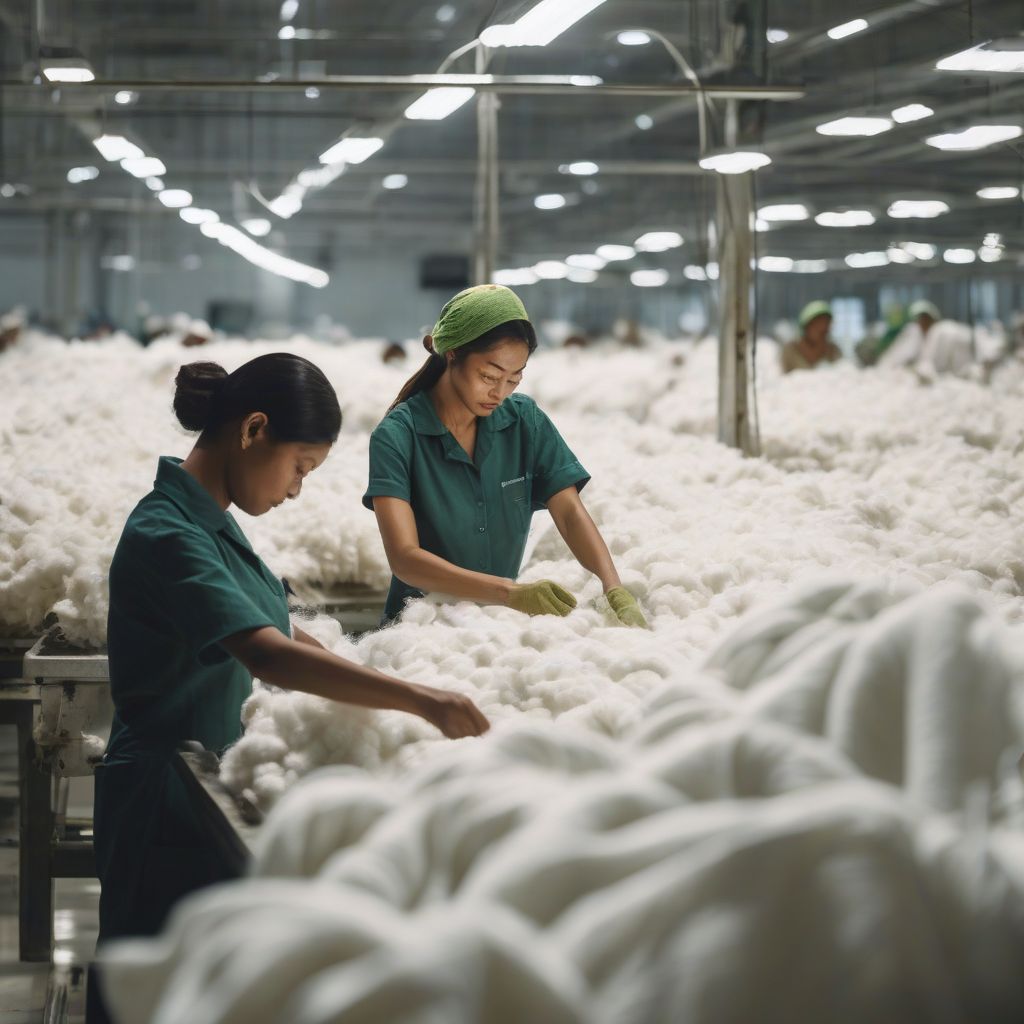Imagine slipping into your favorite shirt. It feels soft against your skin, the colors are vibrant, and the style is perfectly you. But have you ever stopped to wonder about the journey that shirt took to get to your closet? Where did the fabric come from? Who made it and under what conditions?
The fashion industry, while glamorous on the surface, often hides a darker reality of environmental damage and unethical labor practices. This is where transparency in fabric sourcing comes in, offering a beacon of hope for a more ethical and sustainable fashion future.
Unraveling the Threads: What is Transparency in Fabric Sourcing?
Transparency in fabric sourcing means knowing the complete journey of the materials used to create a garment, from the farm where the cotton was grown to the factory where it was woven and dyed. It’s about lifting the veil on often opaque supply chains, shedding light on every step of the process.
This includes information about:
- Origin of Raw Materials: Where were the cotton, wool, silk, or synthetic fibers grown or produced?
- Farming Practices: Were sustainable and ethical farming methods used?
- Processing and Manufacturing: Where and how were the fibers processed, spun, woven, and dyed?
- Labor Conditions: What are the working conditions like in the factories and for the farmers involved? Are workers paid a fair wage and treated ethically?
- Environmental Impact: What is the environmental footprint of each stage, from water and energy use to chemical treatments and waste disposal?
 Sustainable Fabric Production
Sustainable Fabric Production
Why Should You Care About the Label Behind Your Label?
As conscious consumers, we hold immense power to influence change within the fashion industry. Here’s why transparency matters:
1. Empowering Ethical Choices
Transparency empowers us, the shoppers, to align our values with our purchasing decisions. By understanding the story behind our clothes, we can choose to support brands that prioritize ethical sourcing, fair labor practices, and environmental sustainability.
2. Promoting Sustainable Practices
The fashion industry is a major polluter, contributing significantly to greenhouse gas emissions, water pollution, and deforestation. By choosing brands that are transparent about their supply chains, we can support those actively working to minimize their environmental impact and promote eco-friendly practices.
3. Holding Brands Accountable
Transparency holds brands accountable for their actions. When companies know consumers are watching and demanding better practices, they are more likely to prioritize ethical sourcing and sustainability throughout their supply chains.
[amazon bestseller=”sustainable fashion”]
4. Driving Innovation and Change
Demanding transparency pushes the fashion industry towards innovation. It encourages brands to seek out new sustainable materials, implement closed-loop systems, and invest in technologies that minimize environmental impact.
The Challenges of Untangling the Supply Chain
Achieving full transparency in the fashion industry is a complex undertaking. Supply chains are often long and fragmented, with multiple tiers of suppliers and sub-contractors spread across the globe. Some of the challenges include:
- Lack of Traceability: Tracing the origin of raw materials and tracking their journey through various stages of production can be incredibly difficult.
- Cost Implications: Implementing transparent and traceable systems often requires investment in new technologies and infrastructure, which can increase costs for brands.
- Industry Reluctance: Some companies are hesitant to disclose information about their supply chains due to concerns about competition or potential negative exposure.
Weaving a More Transparent Future: Steps in the Right Direction
While challenges remain, the push for transparency is gaining momentum within the fashion industry. Here are some positive developments:
- Blockchain Technology: Blockchain technology offers a promising solution for tracking the movement of materials throughout the supply chain, providing greater transparency and accountability.
- Certification Programs: Organizations like Fair Trade, GOTS (Global Organic Textile Standard), and OEKO-TEX offer certifications that set standards for ethical and sustainable practices in the fashion industry.
- Consumer Demand: Consumers are becoming increasingly aware of the impact of their fashion choices and demanding greater transparency from brands.
Your Guide to Shopping with Awareness
As consumers, we can all play a part in driving change towards a more transparent and sustainable fashion industry. Here’s how:
- Do Your Research: Look for brands that are open about their sourcing practices and certifications.
- Ask Questions: Don’t hesitate to reach out to brands directly to ask about their supply chain and labor practices.
- Support Sustainable Brands: Choose to support brands that prioritize ethical sourcing and environmentally friendly practices.
- Buy Less, Choose Well: Invest in quality, timeless pieces that will last longer and reduce your overall consumption.
Stitching Together a Better Future
Transparency in fabric sourcing is not just about knowing where our clothes come from; it’s about demanding better for the people who make them and the planet we share. By making informed choices and supporting ethical and sustainable brands, we can help weave a brighter future for the fashion industry and create a world where style and sustainability go hand in hand.
